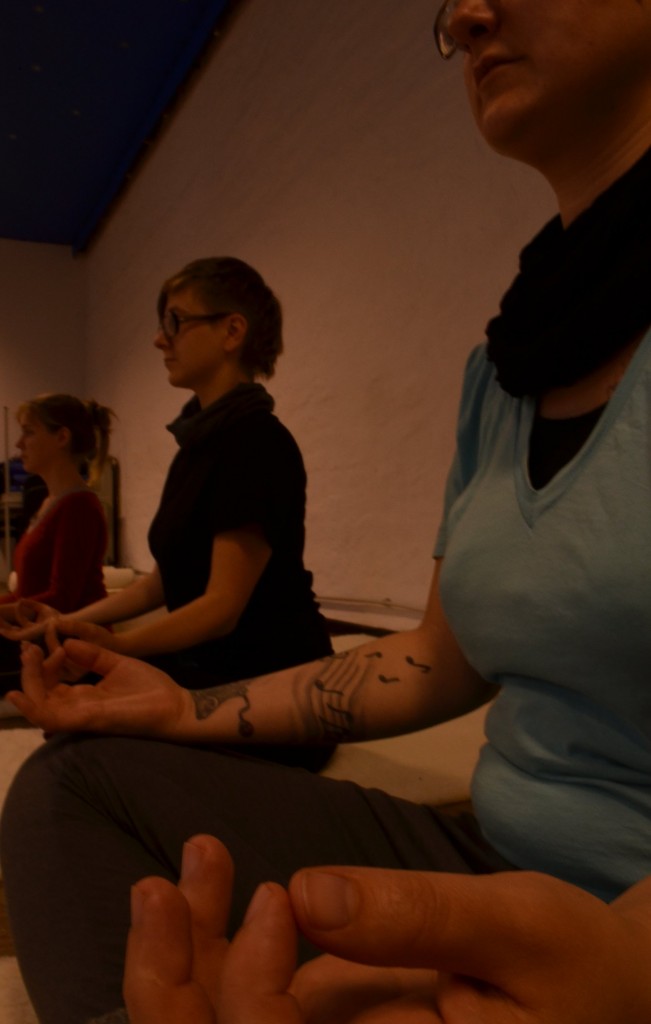At English Yoga Berlin, we get several email requests a day from brand newly-trained yoga teachers to join our team. Unfortunately, we can’t accommodate all of their requests. We pride ourselves on remaining small and community-based, because we believe small classes are especially beneficial to people who are new to yoga or those who want to advance their practice in a safer environment. At larger studios, there may be more opportunities for new teachers, but also more competition.
So you’ve got a 200 hour teacher certificate. What do you do next? How do you start?
Put yourself out there. Get to know the studios in your city. Attend classes to find out if it’s a right fit for you. Try out different studios, maybe the atmosphere is different? Once you find one you like, become part of their community. Do a work exchange, like cleaning or working the front desk. Get to know the other teachers, perhaps they need assistants some time. What does not work is writing unsolicited emails. No matter how amazing your youtube videos or your previous work experience is, nothing beats face-to-face contact. Your email will just get a standard response, if any at all, and be forgotten. This process can take some time, so be prepared to have another job to pull you through until your yoga career takes off.
Practice. Practice. Practice.
While you’re trying out different studios, keep up your training and practice teaching. Some newly certified teachers have already had years of teaching practice before they started their teacher training, and some are just brand new to yoga. And of course, many are in-between. Not only does this help you gain more confidence as a teacher, but it also helps you to build up your clientele. A yoga studio looking to hire new teachers will ask how many students they can bring to the studio. Start by teaching friends in your living room, and they will tell their friends, and that’s how your student-base grows. By-donation outdoor classes in the warmer months help to gather interest by passers-by. Once you’ve built a small following, you can begin to rent space for weekly classes or workshops.
Self-promotion.
Most people don’t equate becoming a yoga teacher with requiring marketing skills. But these days, almost any job field does. Being a yoga teacher most often means being self-employed. The work is precarious. It ebbs and flows with the popularity of yoga in your area, how many yoga studios there are, and how well you can promote your classes. Some months will leave you dry, others will be overflowing with abundance. If marketing feels overwhelming, you can start small. Make your own flyers or business cards to pass around. Start a website. If you can’t afford it, there are many free options available, even a simple blog or Facebook page does that extra bit.
Will I earn enough to make a living?
That depends. If your lifestyle has a lot of expenses, you may not be able to do it. If you are happy living a modest lifestyle and saving when you need to, it’s more possible. If you move to a small town that has no yoga studio, and people have been waiting for you, you could be very lucky. Mostly though, and especially in bigger cities with tonnes of yoga studios and budding teachers, the chances are slim. Most teachers have other jobs on the side or a partner’s support. One way that a lot of studios and established teachers earn money is through offering yoga teacher trainings. And eventually, established teachers do guest appearances and special workshops, and can get more renowned in the yoga world. Being a yoga teacher is more than simply teaching yoga.
English Yoga Berlin offers different types of Yoga in Kreuzberg. We have small yoga classes that encourage an intimate environment and increased awareness. Check out our schedule to attend a class of Vinyasa Yoga, Tantra Yoga and Hatha Yoga in Berlin.







